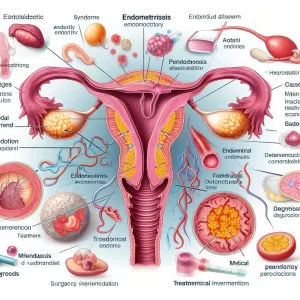What is Cupping?
Cupping therapy is an ancient form of alternative medicine in which a therapist puts special cups on your skin for a few minutes to create suction. People get it for many purposes, including to help with pain, inflammation, blood flow, relaxation, and well-being, and as a type of deep-tissue massage.
The cups may be made of:
Cupping therapy might be trendy now, but it’s not new. It dates back to ancient Egyptian, Chinese, and Middle Eastern cultures. One of the oldest medical textbooks in the world, the Ebers Papyrus, describes how the ancient Egyptians used cupping therapy in 1,550 B.C.
Types
There are different methods of cupping, including:
During both types of cupping, your therapist will put a flammable substance such as alcohol, herbs, or paper in a cup and set it on fire. As the fire goes out, they put the cup upside down on your skin.
As the air inside the cup cools, it creates a vacuum. This causes your skin to rise and redden as your blood vessels expand. The cup is generally left in place for up to 3 minutes.
A more modern version of cupping uses a rubber pump instead of fire to create a vacuum inside the cup. Sometimes therapists use silicone cups, which can move from place to place on your skin for a massage-like effect.
Wet cupping creates a mild suction by leaving a cup in place for about 3 minutes. The therapist then removes the cup and uses a small scalpel to make light, tiny cuts on your skin. Next, they do a second suction to draw out a small quantity of blood.
You might get 3-5 cups in your first session. Or you might just try one to see how it goes. It’s rare to get more than 5-7 cups, the British Cupping Society notes.
Afterward, you may get an antibiotic ointment and bandage to prevent infection. Your skin should look normal again within 10 days.
Cupping therapy supporters believe that wet cupping removes harmful substances and toxins from the body to promote healing. But that’s not proven.
Some people also get “needle cupping,” in which the therapist first inserts acupuncture needles and then puts cups over them.
What Does the Research Show?
There haven’t been many scientific studies on cupping.
One report, published in 2015 in the Journal of Traditional and Complementary Medicine, notes that it could help with acne, herpes zoster, and pain management.
That’s similar to the findings from a 2012 report, published in PLoS One. Australian and Chinese researchers reviewed 135 studies on cupping. They concluded that cupping therapy may be effective when people also get other treatments, like acupuncture or medications, for various diseases and conditions, such as:
But those researchers noted many of the studies they reviewed could have been biased and that better studies are needed.
The British Cupping Society says that cupping therapy is used to treat:
There isn’t research to back all of that up.
Side Effects
Cupping is fairly safe, as long as you go to a trained health professional. But you could have these side effects in the area where the cups touch your skin:
If the cups and equipment become contaminated with blood and are not sterilized correctly between patients, bloodborne diseases such as hepatitis B and C can be spread.
What to Ask Your Doctor First
Talk with your doctor before you start cupping or any other type of alternative or complementary medicine. And talk extensively with your cupping therapist, too, before you try it. Ask:
**What is Cupping?**
**Definition:**
Cupping is an ancient healing technique that involves placing suction cups on the skin to create a vacuum. This negative pressure draws blood to the surface, promoting circulation, reducing inflammation, and alleviating pain.
**How Cupping Works:**
* **Vasodilation:** Cupping stimulates blood flow to the treated area, increasing the supply of oxygen and nutrients to tissues.
* **Muscle Relaxation:** The suction effect helps to relax tense muscles, reducing pain and improving range of motion.
* **Detoxification:** Cupping is thought to promote the removal of toxins and metabolic waste products from the body.
**Types of Cupping:**
* **Dry Cupping:** Involves placing dry cups on the skin to create a vacuum.
* **Wet Cupping:** Involves making small incisions in the skin prior to cupping, allowing a small amount of blood to be collected.
**Benefits of Cupping:**
* **Pain Relief:** Cupping can be effective in reducing pain from muscle strains, sprains, arthritis, and headaches.
* **Improved Circulation:** Promotes blood flow to the treated area, which can aid in healing and recovery.
* **Reduced Inflammation:** Helps to reduce swelling and inflammation in tissues.
* **Detoxification:** Cupping is believed to facilitate the removal of toxins from the body.
* **Relaxation:** Cupping can promote relaxation and stress reduction.
**Who is a Candidate for Cupping?**
Cupping is generally safe for adults with no serious health conditions. It may be beneficial for individuals experiencing:
* Muscle pain
* Inflammation
* Headaches
* Stiffness
* Fatigue
**Precautions:**
* Cupping is not recommended for people with bleeding disorders, skin infections, or open wounds.
* It is important to consult with a trained practitioner before undergoing cupping.
* Cupping can cause skin discoloration, which typically fades within a few days.
**Summary:**
Cupping is an ancient healing technique that uses suction cups to draw blood to the surface of the skin, promoting circulation, reducing inflammation, and alleviating pain. It is generally safe for adults with no serious health conditions and may provide benefits such as muscle pain relief, improved circulation, reduced inflammation, and detoxification. Always consult with a trained practitioner before undergoing cupping.








A physical therapy technique commonly used to address muscular pain and tension.